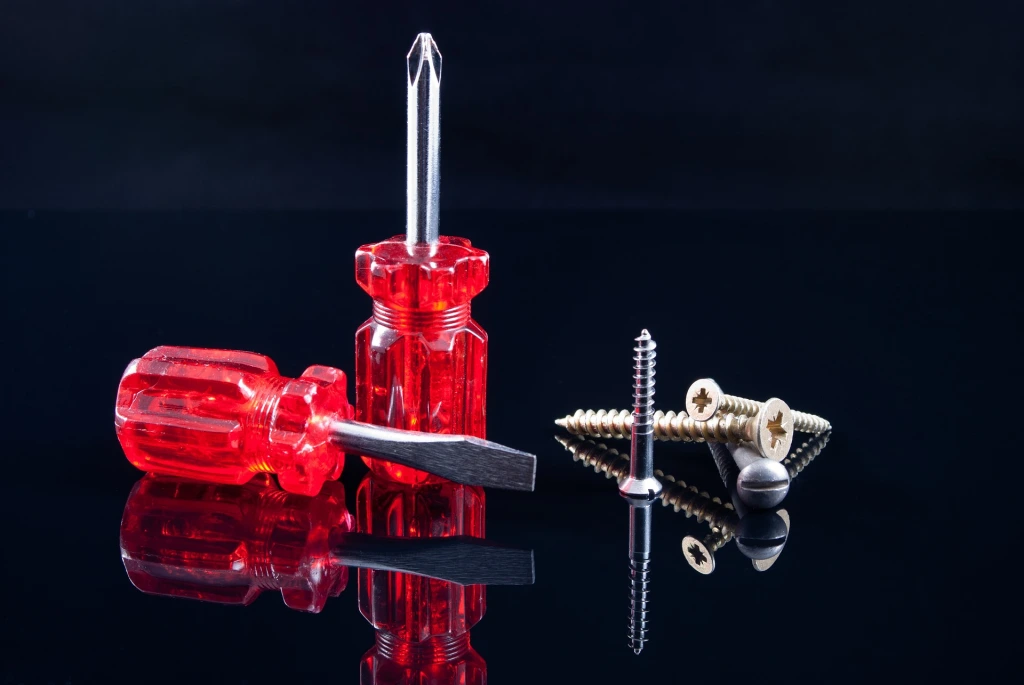Let’s Listen to Limetown is a relisten and recap series for season one of Limetown released every Tuesday and Thursday starting October 9th, 2018, in preparation for its second season release on October 31st, 2018. You can see the full series here.
“Answers”
“Episode 6: Cost-Benefit Analysis”
So, what happens in these episodes?
“Answers”
While most Limetown mini episodes start with a piece of found audio, but “Answers” begins with Lia’s narration. In “Answers,” Lia and Mark discuss an email that was sent to them. The subject line reads, simply, “ANSWERS,” and the body of the email reads “ndc, ndc”. Attached to the email are an encrypted file and a photo of Oskar Totem in Limetown, holding a bottle of wine in front of the research facility. When Lia and Mark have the file decrypted, it gives them back a piece of audio: a digital voice that says, “I have all the answers about Limetown.” Lia responds, and they get another email with another voice. It asks Lia if having all the answers is the most important thing to her, and she says yes–but she also asks how they can verify the email is legitimate.
In response, they are sent an audio clip recorded recorded from within Limetown during the panic–which can be verified given it’s one of the audio clips taken from the news back in the first episode. In the clip, a man and a woman call 911 about the panic, and now, we understand why she was saying, “Turn it off, turn it off!” We can hear a tone, solid, playing loudly in the background.
“Episode 6: Cost-Benefit Analysis”
This final episode of the first season of Limetown begins with Lia’s uneasy, unedited narration. She speaks to Mark through a wire, and Mark gets her levels. Lia explains that, as per the request of the person who sent the emails, she’s meeting them on extremely specific terms as usual; less like usual, though, is the term that their meeting must be broadcast live.
Lia hangs up with Mark and explains that she’s been given instructions to sit at a park bench and wait for further instructions. She’s cut off by the voice of a woman with an Australian accent–though this does not necessarily mean she’s in Australia. The woman says she was told to look for a pretty woman in a yellow scarf, then laments the fact that Lia doesn’t know she’s pretty. She walks with Lia and explains that she’s a sex worker (credited in the episode as Rosie), which surprises Lia. On the walk, she reads Lia a passage from Kurt Vonnegut’s 1963 novel Cat’s Cradle that she was instructed to read:
“Hello,” he said to me, sleepily.
“Hello,” I said. “I like your painting.”
“You see what it is?”
“I suppose it means something different to everyone who sees it.”
“It’s a cat’s cradle.”
“Aha,” I said. “Very good. The scratches are string.”
“One of the oldest games there is, cat’s cradle. Even the Eskimos know it.”
“You don’t say.”
“For maybe a hundred thousand years or more, grownups have been waving
tangles of string in their children’s faces.”Newt remained curled in the chair. He held out his painty hands as
though a cat’s cradle were strung between them. “No wonder kids grow up crazy. A
cat’s cradle is nothing but a bunch of X’s between somebody’s hands, and little
kids look and look and look at all those X’s . . .”“And?”
“No damn cat, and no damn cradle.”
She ends the conversation by saying, very seriously, “Good luck, Lia Haddock.” She leaves Lia in front of a closed Italian restaurant, but the gate is quickly opened by a woman who ushers Lia in.
Inside the restaurant, there’s jazz music playing. There’s also a wine cellar, one table, one chair, and an antique record player, which the woman specifies is a 1912 Pathophone 8. She says she was told it was a good investment, but she thinks it sounds awful. The woman is exceedingly casual, even more than Deirdre Wells and Max Finlayson. She asks Lia to close the door and introduces herself as Lenore Dougal, a name Lia doesn’t seem to recognize.
Lia, in a show of strong journalistic ethics, discloses that she’s recording and broadcasting, and Lenore is pleased. She asks Lia to be sure to let the listeners know she has a sunglasses tan. She apologizes to Lia, saying they’ll have to bear with her; she’s a little hungover. After a “philosophical transformation,” she realized there was no use in hoarding money if she wasn’t going to use it, so she’s been traveling the world and buying indulgences like the wine cellar–and, like with the Pathophone, she doesn’t seem to buy into the inherent value of the very, very fine wines she’s purchased, either.
She puts a kitchen timer on the table. Lia asks why, and Lenore said she was baking bread earlier.
Lia mentions to Lenore that her name wasn’t on the Limetown list, so she’s skeptical about Lenore’s credibility. As proof of her involvement in Limetown, Lenore produces the complete accounting ledger from Limetown. She says she worked as “the city manager, more or less” and specifically managed logistics in Limetown with a team of accountants. She says that she was hired for her strong background in tight situations, both in the military and freelance.
She also says that she has plenty more recordings, all of which were sent to Mark. She says that the recordings are primarily Oskar’s lab notes, but they also contain various records from the devies Oskar placed throughout Limetown. She also says there are many recordings from The Panic.
She says that in Limetown, she was close with Emile. She says that she helped keep him comfortable, given “for obvious reasons” he wasn’t given much free reign in Limetown–though she also makes it clear that he wasn’t locked up, and was there of his own volition. Lenore says that Emile and Oskar worked together to better understand Emile’s condition, and Lia bitterly comments that Oskar sold him out. Lenore confirms this.
Lenore also confirms that the purpose is to develop a “consumer product” that would establish direct mind-to-mind communication, to build “the internet without the internet, as Oskar would say.” Lia suggests that Limetown was a town built to experiment on her uncle’s brain, and Lenore nonchalantly confirms this, too. She says that he wasn’t hurt, but that he did talk about Lia often, that Emile called her “the apple of his eye.” Lenore talks about how she’d always wanted kids but due to marital disputes, hadn’t had them, and she said Emile related to that.
Lia says that on the phone, Lenore didn’t seem so friendly. Lenore, slightly misquoting Whitman’s “Song of Myself,” tells Lia, “Well, I am vast. I contain multitudes.”
Lia asks Lenore to detail what happened after the panic, and Lenore initially pushes back against the request, but then says, “I know I asked this before, but is knowing all the answers the most important thing? Really consider that. It doesn’t have to be.” When Lia confirms that yes, that’s what she wants, Lenore pivots to discussing her recent trip to Bora Bora, when she went skydiving over a beautiful lagoon. She says that she thought to herself,
This is as beautiful as life will be: impossible blues and greens rushing towards you. What if I don’t pull the chute? What will I miss? What will miss me?
Lenore sets the kitchen timer for twelve minutes. Lia asks why, but Lenore’s tone has become urgent and serious. She tells Lia that she has spent her life weighing options and making objective decisions. She explains to Lia that the tech and “the asset” (meaning Emile) were the makings of not just mind-to-mind communication but something an army could use for instantaneous communication that was impossible to decode. She asks Lia to think what that kind of innovation would be worth, and Lenore cuts her off, saying it would be worth “more.”
Lia asks if Lenore was truly a citizen of Limetown, and Lenore replies, “Yes. But that’s not all I am. I’m also a very bad person.” She explains that while she was hired by R. B. Villard–who she knew, but who did not know her–via an agency, the agency itself was working counter to Villard. She was a mole. She says she can’t really explain or identify who she worked for, given her low hierarchy in the agency and the agency’s ever-changing, randomized name. She confirms that this agency is probably the force trying to silence Lia. She also confirms that she was the one who planted the hummingbird folder for Oskar. The hummingbird sticker was chosen arbitrarily; she just needed to show that the folder was significant, and she says the first folder she left for him had a dragonfly.
Inside the folder was a plan and a deal. If Oskar sold out to this agency, he, the product, the “asset,” and all of Limetown’s R&D would be extracted from Limetown; besides Oskar and Emile, the plan was for “100% extinction.” This deal, however, ran into trouble as soon as others in Limetown were implanted with the tech. The tech is important and expensive, and testing its long-term effects was important, so the plan was revised to accommodate.
Lia notes that this is why Max so urgently forced the tech onto Deirdre. She suggests that Max looked into the folder and knew the plan, and Lenore confirms this as well–though she points out that Max’s act of heroism isn’t quite as heroic as Lia is seemingly trying to make it, given he only saved Deirdre.
Lia says Max knew he’d sell them out, and Lenore points out that Oskar only kind of sold them out. As tension was building in the town, Lenore’s agency was becoming tense as well. She says that after the town forum, Oskar locks himself in the facility with herself and a few others, and she watched as the tensions rose and rose, and Oskar kept looking at that drawer with that folder. Finally, once things had hit a crescendo, Oskar finally called to sell them out and seal the deal, but by then, it was too late. “All he king’s horses and all the king’s men.”
Lenore tells Lia that her specialty is in extraction. She says that her main concern is the product, Oskar, and the asset–though Lia cuts her off, asserting she calls Emile by his name. At this point, Lenore says she had to consider the people with the tech along with them–but she tells Lia that she is very good at her job. She says that Limetown was built on a cave system for the purpose of extraction. She says that in the caves, there’s an entrance three miles in that leads to an encampment where agents from her company had been waiting on Oskar’s call for months. By the time the agents get to Limetown, Oskar is already dead, but they can still separate those with the tech from those without using a scanner. The agents take those with the tech out of the city through the caves to their pre-determined locations around the world.
She stops her explanation of the events for a moment to vent her frustration about the mysticism surrounding the overnight disappearance of everyone in Limetown. This wasn’t magic, she says–this was her being good at her job. It was the caves, yes, but it was also “years of planning and flawless execution.”
Lia asks what happens to those without the tech. Lenore asks if she wants the short or long version, to which Lia replies “neither,” which immediately–understandably–infuriates Lenore. Lia’s phone gets a call from Mark, but Lenore says she doesn’t have time to pick up, and Lia silences the call.
Lenore says that those without the tech were eliminated quickly. The bodies were disposed of using alkaline hydrolysis, a process of disposing of human bodies with water and lye. Lenore says that it takes about three hours per person, and that they had to dispose of 162 people–that the process would take approximately 61 hours in full, or 63 with their buffer time built in. Lenore says,
“This was not magic. Magic is what people invent because reality is awful. This was money, brute force, and Excel sheets. I know what I am. I see it in your face. But you’ll notice I said 162 people.”
Lenore explains that she personally protected Sylvia–Winona’s daughter mentioned in the first episode. Lenore says, “And Sylvia, if you’re listening, they know. It’s time.”
Lia asks how Lenore could possibly do this to all those people, and Lenore said it was the logical, objective decision to make–that the losses of Limetown meant nothing in comparison to the lives the tech could save. Lenore then points out to Lia that Lia still hasn’t asked the most important question: what happened to the tech? Lenore says that there are other Limetowns, and that the tests have gone on since.
She says that when she was in Limetown, Emile wanted her to be better, but she wasn’t. She said that she kept looking at things, not realizing that it was just string between hands. “No damn cat, no damn cradle.” Lenore spoke to Emile recently. She says that he is alive, and then he is on the run, but that they will find him using Lia. She says he told her to tell Lia the truth, and that is why she did. Lenore quickly takes a pill, and explains that in ten minutes, it will put her to sleep and then kill her. She offers one to Lia, regardless of the fact that Emile didn’t want her to.
Lia panics. She starts looking for an exit and yells for Mark to call the police. Lenore whispers, “I pulled the parachute because my truth was important.” The timer goes off. There is a pause. Lenore says, “I really think you’d prefer the pill.”
There’s cacophonous noise, and Lia yells to not let the story end here. Lenore says, “Oh no–you can feel it, can’t you?” Guns are cocked, and the episode ends on heavy footsteps followed by silence.
Key facts and characters
- Lenore Dougal: Lenore Dougal was a citizen of Limetown and a mole within the city. She planted a deal from an outside agency for Oskar Totem to sell out the tech, his research, and Emile Haddock. Lenore was the logician who planned the extraction of the survivors of Limetown. Lenore Dougal was played by Lenore Wolf.
- Rosie: Rosie is the sex worker who brings Lia to the meeting location with Lenore Dougal. While she does seem to know more than she lets on, I only bring her up here because I want to give credit for this massively memorable performance by Mischa Ipp, who is in no more than a few minutes of the episode but remains one of the best moments from the first season as a whole.
- The hummingbird folder: The hummingbird folder contained the deal for Oskar to sell out Limetown and the plan for extraction. It was read by Max Finlayson, and it was delivered by Lenore Dougal on behalf of her agency.
- Sylvia: Sylvia is the daughter of Limetown survivor Winona. She does not have the tech, but was personally saved by Lenore Dougal.
How does it hold up?
“Episode 6: Cost-Benefit Analysis” is a masterclass in how to effectively–and suspensefully–execute and information dump.
Information dumps are frowned upon, especially in genre fiction. Limetown, though, isn’t just science fiction; it’s also a mystery, and in this episode, we see some of the final parts of the mystery lock into place. What’s fascinating about this episode is that it is, essentially, exposition from a more informed perspective than the protagonist’s, yet it still feels active and dire. Even though these events have happened in the past, their reveal alone has high stakes.
This is accomplished largely through Limetown‘s iconically impeccable pacing. The episode starts out nonchalant, almost hilariously casual. Lenore Dougal, like Max, Deirdre, and The Reverend, is downright charming. Even with the oily sheen of a corporate evil, it’s hard not to love her a little, to smile along with her when she talks about her hangover or how great she is at her job. The jazz music helps accomplish a luxurious, relaxed, hedonistic feeling, as does the setting.
All of this makes Lenore’s sharp turn into quick, logical, urgent sentences and vivid descriptions more jarring and more suspenseful. It isn’t just the uptick in tempo that puts the listener on the edge of their seat; it’s the contrast between the beginning of the episode and the middle. It’s the subversion of the expectations set by the beginning of the episode, and even the beginning of the season; listeners who heard Limetown in realtime were expecting the seven-part series promised by Lia Haddock back in episode one. Note that the final episode in this season isn’t seven; it’s six.
My complaints for this episode, like my complaints for any Limetown episode, are nitpicky and similar to those I’ve had before. I do not care that Lia Haddock is pretty. The reference sometimes feel a little forced into the dialogue.
Otherwise, this first season finale was everything it should have been. It was suspenseful. It answered as many questions as it raised. It continued the depth of Lia’s character. It was a fully-formed character study of its own. It expanded the world. And it left listeners wanting more for years.
Mapping out Limetown
https://twitter.com/ckolderup/status/1055606209288400896
A quick edit! The sharp-eared @ckolderup noticed this moment where Lia’s location was likely confirmed.
- Rosie mentions Lia’s scarf in the beginning of the episode. Lia’s wearing the scarf she found in her attic, on which she found the Limetown pin.
- The “no damn cat, no damn cradle” line is a well-known passage from Vonnegut’s Cat’s Cradle, a novel largely about religion, but also about the truths and lies we tell. The quote deals with wanting to see past the lies we’re told and buy into. The quote suggests that when you look past the clean story you’re given, you’re likely to see meaningless chaos. Lenore says early on that she was hired because she could see the forest from the trees, but it seems like she realizes now that she might not be able to do that as well as she’d thought.
- “No Damn Cat, No Damn Cradle” is also the title of a royalty-free song that fits well into Limetown‘s aesthetic overall.
- In saying “I am vast. I contain multitudes,” Lenore is quoting Walt Whitman’s poem “Song of Myself” from Leaves of Grass. She slightly misquotes the line–it’s “I am large“–but the allusion is also an interesting one to make within context. Leaves of Grass is famously about the interconnectedness of all things, the ties that bind every living thing and every event together. Lenore here is nonchalantly alluding to how everything she’s done for Limetown is connected, or how connected she is to the downfall of Limetown, or how connected Lia is to the story of Limetown–or how all of those things are connected, and more.
- There’s also the reference to the nursery rhyme of Humpty Dumpty, which reentered the cultural zeitgeist a few years back when someone on the internet pointed out that nowhere in the rhyme does it say that Humpty Dumpty was an egg and not, you know, a human person.
- Lenore says that Emile called Lia the apple of his eye. This is important. I cannot explain why yet, but trust me when I tell you to remember this.
- The next and final recap will include the mini-episode “A Statement from American Public Radio” as well as discussing the first season in full!
Listen to Limetown: Apple | Google | Stitcher | Pocket Casts | RSS | Transcripts








Leave a comment